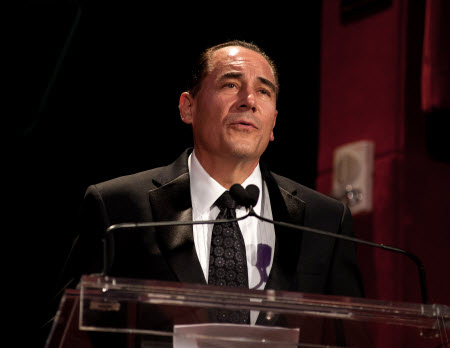TiVo Developing ‘Legal’ Version of Aereo

Though it was short on specifics, TiVo confirmed that it is working on a legal version of Aereo, the failed service that sold access to a cloud DVR paired with a system that captured over-the-air TV signals and redistributed them to subscribers over the Internet.
TiVo reasons that OTA, combined with broadband-fueled over-the-top services, presents an opportunity to help its cable partners target a small but growing number of cord cutters who are seeking less-expensive video and TV alternatives but who are also willing to create their own bundles.
“The question is, how do you do that?” Tom Rogers, TiVo’s CEO and president, said during an interview last week at the INTX show in Chicago. “To us, the answer is pretty clear — it’s kind of the Aereo model, done legally and better.”
What’s not as clear is how TiVo intends to pull it off. Aereo used an array of tiny thumb-sized digital antennas to capture digital broadcast signals before processing them into a format it could then distribute to paying customers for viewing on connected TVs, tablets, smartphones and Web browsers.
TiVo promised to share more about its strategy this summer. “Yes, they are currently developing a product and although they are not releasing any details, they plan to hold a significant event in San Jose in late July to discuss it,” a TiVo spokesperson said when asked to clarify TiVo’s plans.
TiVo acquired Aereo’s trademarks and customer lists for about $1 million in March following a bankruptcy auction. Other parties came away with Aereo’s patents and some of the startup’s equipment. Aereo filed for voluntary Chapter 11 bankruptcy last November after shutting down the service last June, soon after the U.S. Supreme Court ruled that Aereo’s delivery of TV station signals to subscribers without paying a copyright fee violated the law.
While it’s not clear if TiVo plans to recreate the Aereo system and agree to pay retransmission fees, TiVo has been developing and testing a cloud DVR platform.
Multichannel Newsletter
The smarter way to stay on top of the multichannel video marketplace. Sign up below.
TiVo has also been targeting cord-cutters with the Roamio OTA, a recently launched four-tuner HD-DVR that blends access to over-the-air TV channels with OTT fare from partners such as Hulu, Netflix and Amazon, and wraps it all into a unified interface. It sells for $49.99 (plus a $14.99 per month service fee), though TiVo is also experimenting with an option that sells the device for $300 with a lifetime subscription to the TiVo service.
TiVo has not released sales data on the Roamio OTA, but has published the results of a survey last week finding that most buyers of the Roamio OTA who identify as cord-cutters came by way of a satellite TV provider.
Rogers said he believes that cable operators are well suited to go after cord-cutters who have fled satellite by offering them a bundle that features OTA and broadband. Frontier Communications has already agreed to feature the Roamio OTA in a future offering that will be pitched to broadband-only customers.
“It’s one helluva cheap way for cable operators to have an OTA/OTT device that says, ‘Satellite cord-cutter, I have a broadband package for you with a video component,’ ” Rogers said. “I think it allows them [the cable operator] to own the low-end and win over satellite subscribers.”
Nielsen estimates the U.S. had more than 12.3 million broadcast TV-only homes at the end of 2014.
Rogers said he also thinks MSOs are positioned to reach the high end of the market by integrating their full-freight TV service with OTT.
“Those two pieces, to me, the cable industry should own,” Rogers said.
The middle, he said, will be covered by other emerging options such as Sling TV, Sony PlayStation Vue and whatever pay TV service Apple ends up assembling.
But he also said he believes cable now has an opportunity to step up and support more OTT integrations on its video platforms.
“This is getting to be too confusing a landscape,” Rogers said. “There are too many different ways for people to put together their own bundle.”
Rogers said he expects cable operators to continue to experiment with different packages that can counteract new skinnier TV bundles.
“I think the cable operators response on pricing is going to be the thing to watch,” he said. “I would be really surprised if cable operators don’t find a way to come up with a bigger package of channels for $50 or $60.”
While that would cost more than Sling TV, which starts at $20 per month and features $5 add-ons, a package of about 80 channels, he said, would ensure that the customer can still get a decent price without having to sacrifice some channels they like.
